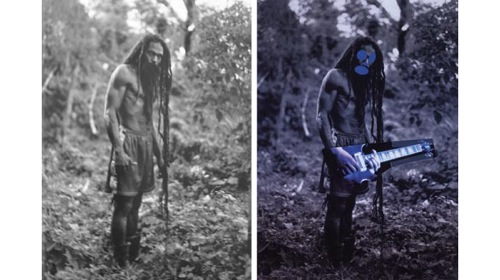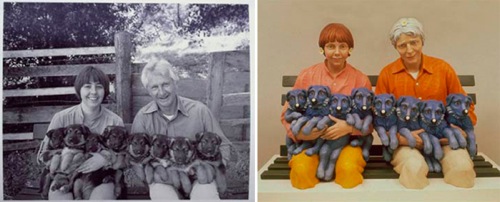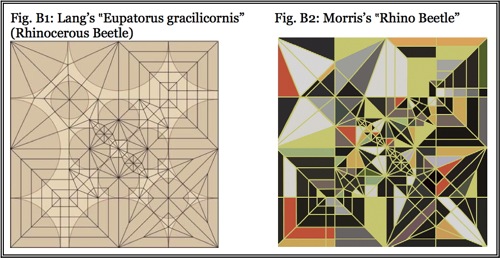The Rule of Transformation
Copyright is a slippery realm. But here is a copyright case extraordinarily slippery. Both parties have legitimate claims. One party is an origami artist and the other an abstract painter who appropriates patterns.
I am all for appropriation, a venerable and necessary practice in art. I am also all for process art, that is art created by processes, or in the process of making other stuff.

Andy Warhol appropriated the “found” image of a grocery store soup can. Roy Lichtenstien appropriated the images found in comic books. Both are revered artists.

A few years ago street artist Shepard Fairey appropriated a photograph of Barack Obama to turn into a poster; the photographer sued and that case is still pending.

Painter Richard Prince appropriated photographer Patrick Cariou’s rastafarian photos. Prince lost in court.

Jeff Koon appropriated a photograph for his sculpture on right; He lost.

Here Jeff Koon appropriated a photograph of feet for a painting. He won.
In the latest case, painter Sarah Morris appropriated the crease pattern of Robert Lang’s origami folds. Lang is a origami genius. He helped NASA design satellite folding/unfolding solar panels. He uses computers to devise folding patterns to create impossibly detailed 3D organisms from a single piece of paper. The pattern on the left below will, when folded by him, turn into a convincing Rhinocerous Beetle. The pattern is an intermediate artifact of the origami process, often published for other origami fans.

Sarah Morris is a respected abstract painter, who has painted grids and geometric shapes, and “found” patterns for decades, and has had major shows in major museums. Many of her early paintings look origami folds.

So it was no big stretch when she started painting “found” origami fold patterns, adding colors, removing lines here and there. One of the patterns she found was Lang’s Beetle pattern. Her painting of it is on the right.

Not just one pattern, but several.

Lang claims that he has been displaying and even selling his fold patterns as art for years. Morris claims she has been painting found patterns like this for years, and that she “transforms” the found piece into something new. Just as Warhol transformed the soup can, and Lichtenstein transformed the comic panel, from artifact into art.
I can see Lang’s point and share his anguish, but in the end, I’d rule in Morris’s favor, because I think she has transformed the found artifact. I follow the question, “Is it bettered by the borrower?” In this case, yes.
Did Warhol better the soup can? That is hard to say, but he did transform it. “Transformation” works even better as a guide to these hard questions. Did Fairey transform the photo into a poster? Yes. Did Morris transform Lang’s crease pattern? Yes.
I find the notion of transformation is a pretty good question to ask about copyright conundrums. Did the copier transform the work? If yes, then the derivative is not really a “copy”; it’s been transformed, mutated, improved, evolved. That is still a judgement call, but it is the right question.


